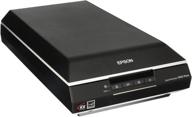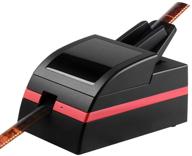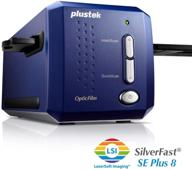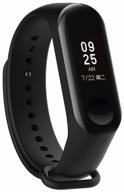
Review on 📸 KODAK SCANZA Digital Film & Slide Scanner: Convert 35mm, 126, 110, Super 8 & 8mm Film Negatives & Slides to JPEG with Tilt-Up 3.5" LCD, Easy-Load Film Inserts, Adapters & More! by Jason Melvin

A good concept, inexpensive, but I want a better one.
BACKGROUND: I am a professional photographer and also have a small side business scanning and restoring photos. So far I have not been able to find a 35mm slide/negative scanner that is affordable and produces fast, high quality scans. The ones you can still find that do high-quality scans are expensive ($6,500 for the Nikon 8000), have lame software, and more importantly, scans take a few minutes. It's almost impossible to scan hundreds (or more) slides this way, especially if you have to feed them manually. This Kodak Scanza is similar to several others on the market (particularly the Wolverine F2D), but as I already have a high speed Kodak/Alaris print scanner I thought I'd give this one a try. It's really just a cheap digital camera set up for scanning, but that's exactly the concept I was looking for. Now if they made a higher quality device at a reasonable price I would be all for it. For now this might be enough to produce mediocre consumer-quality images, but I'd like to see a better option with a sharper lens and at least a slightly higher resolution. Even better would be an automatic feed that scans a series of slides while you work on other things. (SlideSnap can do this, but uses old, used Kodak projectors and can cost up to $4,000 for a full setup. ) Pros: - Does a good job of scanning slides and negatives, but far from professional quality. - Fast scans (digital capture) in 1-2 seconds - Inexpensive. Cons: - Cheap plastic construction. Some adapters seem to break when you try to open them, so I don't know how long they will last. Despite the scanning speed, you may not want to scan hundreds or thousands of slides. since you have to feed them by hand - Not too sharp images, but should work for prints up to about 8x10 from a sharp original slide or negative 3000. Not bad, but keep in mind these pixels aren't too sharp. I wouldn't use the built in interpolation up to 22MB as the quality and sharpness are slightly compromised. I recommend, increase the size if necessary. However, you may not want to scan hundreds or thousands of slides because you have to feed them manually. - Not too sharp images, but should work for prints up to about 8x10 from a sharp original slide or negative. - They don't say how much dpi/ppi it is, but at 14MB I'm guessing it's around 3000. Not bad, but be aware that these pixels aren't overly sharp. I wouldn't use the built in interpolation up to 22MB as the quality and sharpness are slightly compromised. I recommend increasing the size if necessary. However, you may not want to scan hundreds or thousands of slides because you have to feed them manually. - Not very clear images but should work for prints up to about 8 x 10 from a sharp source slide or negative. - They don't say how much dpi/ppi it is, but at 14MB I'm guessing it's around 3000. Not bad, but be aware that these pixels aren't overly sharp. I wouldn't use the built in interpolation up to 22MB as the quality and sharpness are slightly compromised. I recommend increasing the size if needed. but remember that these pixels are not overly sharp. I wouldn't use the built in interpolation up to 22MB as the quality and sharpness are slightly compromised. I recommend increasing the size if needed. but remember that these pixels are not overly sharp.
- Office Electronics
- High Price
New products
Comments (0)
Top products in 🖨️ Photo Printers & Photo Scanners

Canon 0307B001 CanoScan Color Scanner

11 Review

Experience Ultimate Color Accuracy with Epson Perfection V600 Colour Flatbed Scanner

15 Review

Pacific Image PowerFilm CCD Scanner: Fast 📷 and Automated 35mm Film Scanning at 6MP Speed!

11 Review

Plustek OpticFilm 8100-35mm Negative Film/Slide Scanner with 7200 DPI and 48-bit Output: Bundle Silverfast SE Plus 8.8, Supports Mac and Windows

11 Review





